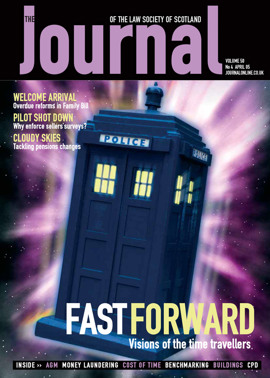The right support

Regular readers of these articles will appreciate that the profitability of a firm of solicitors is determined by a wide range of factors – being a good lawyer is no longer necessarily sufficient. Some firms manage to achieve quite high levels of profitability through undertaking relatively straightforward work. Others, undertaking more complex work and working long hours, sometimes seem to struggle to achieve levels of profitability that justify their hard work and efforts.
The key is as much in the structure of the firm and how it is managed as it is in the type of work done. Clearly firms undertaking work that is perceived as justifying higher hourly rates; that have clients who provide a regular flow of instructions; and have bright, self-motivated lawyers, have a head start. If their structure is inappropriate however these advantages can be dissipated.
Two of the “profitability drivers” that warrant particular attention concern staff ratios:
- gearing or leverage, and
- support staff ratios.
Gearing is the number of lawyers (qualified or unqualified) in addition to the profit-sharing or equity partners. This has a strong relationship to profitability as indicated in chart 1. The charts are based on those firms who have taken part in the Cost of Time Survey over the years. The last available figures for the profession as a whole show 3,585 partners in private practice but only 2,820 employed solicitors (associates and assistants) and 269 consultants. Gearing in the profession as a whole is therefore less than 1 even including consultants, many of whom may not generate significant fee income. The most profitable firms in the survey had relatively high levels of gearing – they had two to five other lawyers in addition to each profit-sharing partner, rather than under one, as in the case of many firms.
To illustrate this point, a more profitable 5-9 partner firm, with, say, seven partners, would have a further 18 lawyers, compared to just six more lawyers in the less profitable firms.
It may well be that these firms with better gearing are going to be in Glasgow and Edinburgh, although as chart 2 indicates, some “country” firms also have relatively good gearing. A quarter of the 5-9 partner firms that took part had a gearing greater than 2.7.
Over time, gearing has changed amongst firms as indicated in chart 3.
Interestingly, this indicates that gearing amongst sole principals has fallen over the last six years, from around one to nil. Gearing amongst larger firms by contrast has risen.
A related benchmark is total income per profit-sharing partner. This takes the total fee income of a firm and divides it by the number of profit-sharing partners. Gearing is one of the big drivers behind this figure, and chart 4 once again indicates a gradual improvement in recent years.
The second staff ratio that is of interest is support staff per fee-earner.
There has been a general trend amongst firms in recent years away from the traditional one to one relationship between a fee-earner and a secretary towards one secretary supporting a small team of perhaps two, three or four fee-earners.
Chart 5 compares the number of fee-earners to total support staff – i.e. secretaries and central staff such as cashroom, reception and library employees. Some interesting differences between firms of different size are highlighted, together with a general trend amongst some size groups towards a lower ratio.
With both of these ratios it would be a mistake to accept blindly the proposition that higher levels of gearing and lower levels of support staff are the answer in all circumstances. Firms vary, and factors such as the type of work undertaken – especially that can be delegated to more junior fee-earners – and the extent of supervision are big factors to be taken into consideration.
As always, the key is constantly to challenge traditional working methods. With the greater use of IT and such developments as digital dictation, traditional working methods will increasingly come under pressure. They need to evolve, and it is the task of management to ensure this evolution takes place.
All participating firms receive a free copy of “The 2004 Survey of Law Firms in Scotland”, the detailed report upon which this article is based. They also receive a free confidential individual report. Other firms can obtain a copy of the full report which contains a wide range of useful statistics and performance indicators – from Lisa Hamilton at the Society on 0131 476 8164 (lisahamilton@lawscot.org.uk).
In April the President will be writing to all firms inviting them to participate in the 2005 survey. Participation is free and this year carries a three hour CPD credit as well as an individual report on cost rates for partners and staff within the specific firm and a copy of the final survey report. In recent years there has also been a prize draw. This year the prize of a theatre break in London was won by David Devlin, Connor Malcolm. The Society is again grateful to Alex Quinn and Partners for sponsoring the prize in 2004.
Andrew Otterburn is a management consultant and for many years has run practice management seminars on behalf of the Society. He has helped in the development of the Cost of Time Survey since 1999, working initially with Professor John McCutcheon and now with Dr John Pollock. His book, Profitability and Law Firm Management, is published by the Law Society in London.
Dr John Pollock, a consulting actuary, has been responsible for the administration and statistical aspects of the Cost of Time Survey since 2002. John is well known to personal injury, employment and family law solicitors in Scotland through his expert witness work at Pollock & Galbraith Consulting Actuaries.
Please refer to Magazine PDF to view charts
In this issue
- Appropriate dispute resolution
- Retailers seek effective court action on crime
- Information and Consultation Regulations
- New identity for criminal justice body
- Spring in our step
- Continuing to develop CPD
- Future present
- Securing the future
- The right support
- A wealth of measures
- Paper-free at last?
- Adding the muscle
- Mark your card
- AGM report
- A seat with a view
- Drawing the line
- Milestones on a long road
- Jobs or birds?
- Safe as houses
- Blueprint for the future
- Scottish Solicitors' Discipline Tribunal
- Bail pilot takes off
- More tales from the Bar
- Book reviews
- Thin end of the wedge?
- Keeper's Corner
- The best laid plans
- PSG's green shoots






